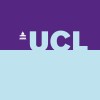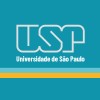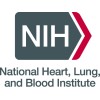
Effect of Remote Ischaemic Preconditioning on Clinical Outcomes in CABG Surgery
Coronary Heart DiseaseCoronary heart disease (CHD) is the leading cause of death in the UK, accounting for 124,000 deaths (2006) and costing the UK economy over £7.9 billion a year. Patients with severe CHD are usually treated by coronary artery bypass graft (CABG) surgery, the risks of which are increasing due to older and sicker patients being operated on. New treatment strategies are therefore required to improve health outcomes in these high-risk patients undergoing CABG with or without valve (CABG±valve) surgery. The hypothesis tested in this research proposal is that remote ischaemic preconditioning (RIC), a virtually cost-free, non-pharmacological and simple non-invasive strategy for reducing the damage to the heart muscle at the time of surgery, improves health outcomes in high-risk patients undergoing CABG±valve surgery. In this research project, 1610 high-risk patients undergoing CABG±valve surgery will be recruited via 28 UK hospitals performing heart surgery. Patients will be randomly allocated to receive either RIC or control. For RIC, a blood pressure cuff will be placed on the upper arm to temporarily deprive it of oxygen and nutrients, an intervention which has been shown in the investigators pilot studies to reduce damage to the heart muscle by up to 40% during CABG±valve surgery. The investigators will determine whether RIC can improve health outcomes in terms of better patient survival, less heart attacks and strokes, shorter hospital stay; less damage to the heart, kidney and brain during surgery; better heart function post-surgery and less chance of developing heart failure; better exercise tolerance and quality of life.

Influence of Routinely Adding Ultrasound Screening in Medical Department
Heart DiseaseDyspnea3 moreUltrasound (US) is widely used as a diagnostic tool in a hospital setting. In a medical department, diagnosis like heart failure or most kinds of heart diseases, hypervolemia, hypovolemia, pleural effusion, pericardial effusion, ascites, diseases in the gall bladder/bile tract, urine tract and venous thrombosis are common. US is the key diagnostic tool in these diagnosis, and on early diagnosis is crucial with respect to the patients well-being and inpatients workflow. 1. The aim is to study the clinical use of pocket-size US as a screening diagnostic tool in an medical department with respect to inpatients workflow and diagnostics. Method: Patients admitted (in certain preset periods) to Department of medicine will be randomized to routinely adding an ultrasound examination with pocket-size device by residents on call. Time to definitive diagnosis, time to definitive treatment and time to discard will be recorded. US findings will be validated against standard echocardiography, or standard US/CT/MRI performed at the Radiological department.

Prevention of Coronary Heart Disease in Morbidly Obese Patients
Morbid ObesityHypertension3 moreThe changes in risks of developing coronary heart disease in patients with morbid obesity after different weight loss interventions have not been extensively studied. The primary objective of this study is to investigate whether an intensive lifestyle intervention program in a tertiary care clinic (Spesialsykehuset for Rehabilitering) is comparable with a 7-week low-energy-diet followed by bariatric surgery in decreasing the risk of cardiovascular disease in these patients.

Randomized Clinical Comparison of the Endeavor and the Cypher Coronary Stents in Non-selected Angina...
Ischemic Heart DiseaseRandomized clinical comparison of the serolimus eluting Cypher stent and the zotarolimus eluting Endeavor stent.

The Effect of Remote Ischemic Preconditioning Applied in Children the Day Before Open Heart Surgery...
Congenital Heart DiseaseThe study research is to analyse brief episodes of limb ischemia applied to children the day before open heart surgery as protection from myocardial injury induced by extracorporeal circulation.

Catheter-Based Treatment of Cardiovascular Disease
Obstructive Coronary Artery DiseaseObstructive Peripheral Artery Disease1 moreThis study offers catheter-based treatment of heart or artery disease. This protocol permits treatment of patients with cardiovascular diseases who may not be eligible to participate in current research protocols. The treatment offered in this protocol is not experimental, but rather standard treatment provided in most large referral hospitals in the United States. Patients 18 years of age and older who are candidates for catheter-based treatment of obstructive artery disease, including blocked blood flow in a coronary artery (artery to the heart) or in an artery of the arm, leg, brain or kidney may be eligible for this study. Candidates are screened with a general medical evaluation that may include blood tests, magnetic resonance imaging, and monitoring of heart rate and rhythm. Participants undergo angioplasty or stenting for blockage in an artery to the heart or an artery of the arm, leg, brain or kidney. The procedure uses a balloon-tipped catheter to open the blocked artery and likely requires permanent implantation of a metal tube (stent) to improve blood flow through the vessel. During the procedure, the patient is given a sedative and pain medication, if needed.

Recovery of Left Ventricular Function in Chronic Total Occluded Coronary Arteries
Coronary Heart DiseaseThe study is a randomised comparison of recanalisation of chronic occluded coronary arteries with implantation of Sirolimus eluting stents and medical therapy. Myocardial function and scar-size are determinated by using magnetic resonance imaging. The study hypothesis is the superiority of medical therapy over revascularisation.

Progression of AtheRosclerotic PlAque DetermIned by Computed TomoGraphic Angiography Imaging(PARADIGM)...
Coronary Heart DiseaseTo describe the natural history of the coronary atherosclerotic plaque development and progression over time by CCTA with demographic and laboratory data for refinement of risk stratification of patients referred for CCTA.

ORSIRO Stents Versus Xience PRIME Stents Assessed by Optical Coherence Tomography
Coronary Heart DiseaseThis prospective, randomized trial will compare the extent of covered stent strut segments by assessed by Optical Coherence Tomography (OCT) of the ORSIRO DES with that of the XIENCE PRIME DES, which is the standard of choice of contemporary drug eluting stents (DES).

Elective Induction vs Spontaneous Labour in Patients With Heart Disease
Heart; Disease,Complicating PregnancyPre-existingFifty pregnant patients with acquired and congenital heart disease between 38-41 weeks were randomised into elective induction and spontaneous labour groups only after bishop score was equal to or more than 6.It was concluded that induction of labour with oxytocin is a relatively safe procedure in women with low risk heart disease with NYHA class I and II. It resulted in a similar caesarean delivery rate and was not associated with more maternal and neonatal complications.
